Media | Articles
Coulda Had a V-12: Here Are 10 of the Most Memorable
Thanks to recent news from Aston Martin and Ferrari, the V-12 engine layout thankfully remains in production and continues to find a home in new vehicles. It’s great news, and easily put into words. Less easily described, though, is the sound of a V-12 engine—you truly need to hear one to appreciate their symphony.
Those sonorous notes, along with the silky smooth power delivery that comes with them have graced the automotive landscape for decades. In celebration of the V-12’s continued presence, we took a look back into the V-12 engine’s storied history across multiple brands to pick some of our favorites.
Packard Twelve
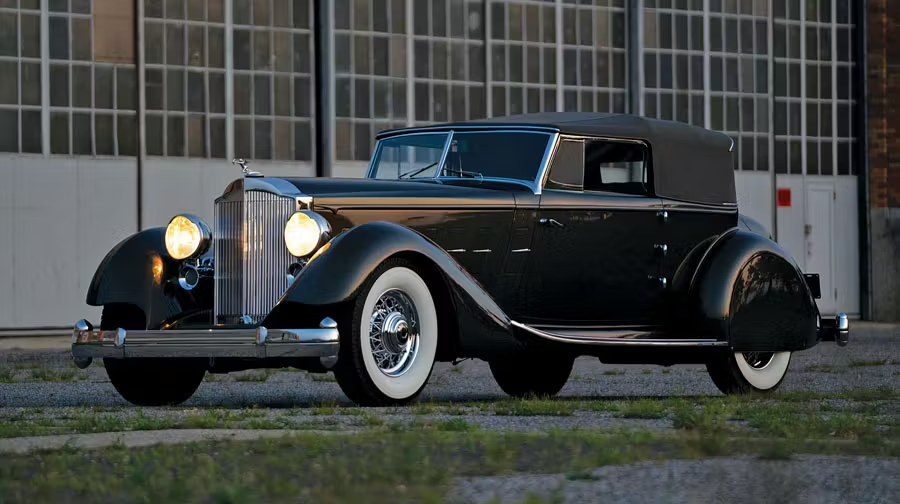
The Packard Twelve started life as the Packard “Twin Six,” but the second generation of Packard V-12 (1933-39) and was known for a body design worthy of a V-12 engine. Packard’s iconic grille was paired with some of the most famous coachbuilders of the era, including LeBaron and Dietrich. The Packard Twelve was indeed the flagship of Packard line, with the Super Eight, Eight, and “Junior” models like the One-Twenty, Six, and One-Ten slotting below. They were fine models with perfectly acceptable engines, but the Twelve was the one that stood out.
2008 Audi Q7 V-12 TDI

You weren’t ready for this one, were you? But it’s true, as the Volkswagen Group made a V-12 engine for the flagship Q7 utility vehicle. This was before Dieselgate came to fruition, so this turbocharged, direct injected, V-12 diesel had the potential for success.
Audi’s oil burning V-12 was used on this single vehicle from 2008-12, sporting 493 horsepower and a whopping 738 lb-ft of turbodiesel torque. While this particular Q7 never made it to the U.S., it would absolutely be one of the most amazing diesel vehicles in America, when they are legal to import in 2033, that is.
Marketplace
Buy and sell classics with confidence
Jaguar V-12

While an inline-six rests beneath the bonnet of many iconic Jaguars, it was only natural for larger, later model Jags to utilize the relaxed cadence of its V-12 motor in 5.3- or 6.0-liter displacements. Luxury cars were getting bigger and bolder, and doubling the cylinder count certainly helped with that transition.
Jag even developed a 7.0-liter example used in motorsport, but Jaguar’s V-12 was primarily notable as a top-tier luxury car powerplant during the Malaise Era, thanks to the addition of fuel injection and a High Efficiency (HE) combustion design in 1981. This smooth, relaxed engine was the perfect dance partner to a cabin fitted with decadent leather and burl wood, and its demise in 1997 was the end of an era for British motoring.
Lincoln-Zephyr V-12

Like so many other components found in Lincoln vehicles, the flathead V-12 found in 1932 model Lincolns and Zephyrs was heavily based on parent company Ford’s flathead V-8. The motor wasn’t without its flaws however, mostly present in its PCV, oiling and cooling systems. Those issues were addressed over time, however, and Lincoln’s V-12 ultimately became part of the brand’s success: Take something from Ford, modify the heck out of it, and turn it into something worthy of a luxury vehicle.
Ferrari Colombo V-12
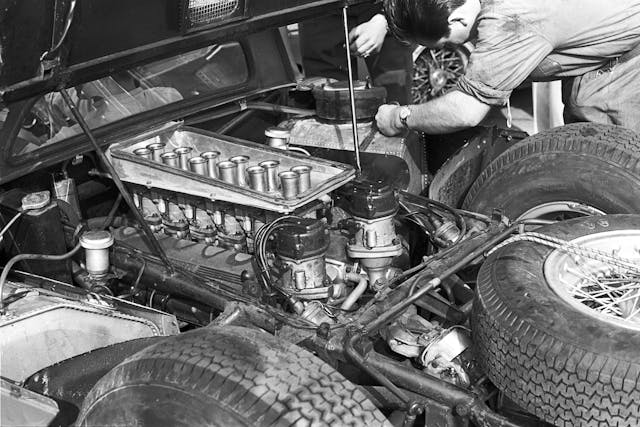
Named after its creator, Gioacchino Colombo, this Ferrari V-12 powered some of the most famous, desirable and valuable vehicles to wear Ferrari’s prancing horse emblem. The sheer volume of changes this motor underwent over the course of its 41-year production run is impossible to cover for this list.
No matter, though: Every iteration of this all-aluminum masterpiece delivered the feel and sound of exotic performance befitting a Ferrari, from its placement in the original 1947 Ferrari 125 S, to icons like the 1962 Ferrari 250 GTO, and delightful touring cars like the final Ferrari 412i from 1988.
BMW M70

While BMW’s flagship V-12 came in four variations over the course of several decades. Perhaps the most appealing example is the M70 design that powered the E32-generation 7-series and E31 8-series. Be it a BMW 750i or 750iL, you were guaranteed one of the best performing luxury sedans on the planet. And the 850i, 850Ci, and 850CSi were grand touring coupes of the highest order, especially when optioned with a six-speed manual transmission.
But the real reason why the M70 V-12 from BMW was so special is its legacy with the McLaren F1. Its stunning 618 horsepower helped propel the F1 to an insane top speed of 240.1 mph in 1998, thanks to four-valves per cylinder, variable valve timing, and a surprising lack of forced induction. Ah, if only modern hypercars could take a page from BMW’s M70 masterpiece and ditch the turbochargers!
Cadillac V-12

Here’s an awkward twist to the overall theme of this story: While most auto manufacturers had a V-12 as their flagship, top-of-the-line, first class powerplant, this doesn’t apply to Cadillac. Their V-12 was actually one of their V-16 engines with four cylinders lopped off.
The V-12 Caddy was made from 1930-37, and “only” made 135 horsepower relative to the V-16’s rating of 165. While both were premium offerings with features like overhead valves and hidden wiring/plumbing, this V-12 rightly plays second fiddle to the Cadillac V-16.
Toyota GZ

While Japan is better known for engines with fewer pistons, the Toyota Century and its V-12 engine are the crown jewels for an entire nation. Toyota had premium-car intentions for decades, but no other brand in Japan had the nerve to equip a vehicle with a V-12 engine. Toyota did just that for their flagship Century luxury sedan in 1997. In doing so, the V-12 (codenamed 1GZ-FE) soldiered on for another 20 years, ensuring Toyota’s place in luxury car history.
Lamborghini V-12

Ferrari was slow to full embrace dual overhead camshafts for their V-12, but Lamborghini (as was their wont) chose a different path, going all in on the four-camshaft phenomenon with the V-12 in their first car, the 350 GT. The same engine family powered Lambos for decades, including the Miura and Countach, and ending its reign with the 2010 Murciélago. While modern Lambos under the watchful eye of Audi are clearly better performers with modern V-12 engines, their improvements only serve to enhance the original’s mystique. And perhaps it proves that all supercars need twelve cylinder engines, otherwise perhaps they aren’t actually that super at all?
Mercedes M275

While there are four generations of Mercedes-Benz V-12 opulence, the M275 was both twin turbocharged and impressive enough to remain in production for the latest Pagani hypercars. That’s right, even the new Pagani Utopia uses an M275 (technically an M158 derivation) to achieve forward thrust with 754 horsepower, with a manual transmission to boot.
But the M275 V-12’s zenith doesn’t necessarily point solely to the crème de la crème Pagani—there were too many fantastic automobiles that utilized this engine. The list includes Maybach luxury sedans, S/SL/CL “600” class luxury cars and their AMG tuned “65” series counterparts, the radical SL65 AMG Black Series, and even the outlandish Maybach Excelero sports car. Their torque output was legendary and impossible to match, and it’s one of the few engines that can provide EV-like thrust at low speeds with Lamborghini-like top end acceleration.
Perhaps we saved the best for last, as this motor could be considered a gold standard for which all modern luxury cars are judged by. Mercedes has made a replacement for this motor (M279), but it doesn’t do anything to tarnish the twin turbo M275’s performance potential. We can thank Pagani for that, or perhaps we should credit Mercedes for keeping the V-12’s flame alive in more ways than any other automaker possibly could.
***
Check out the Hagerty Media homepage so you don’t miss a single story, or better yet, bookmark it. To get our best stories delivered right to your inbox, subscribe to our newsletters.

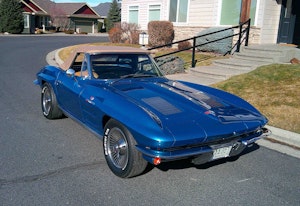
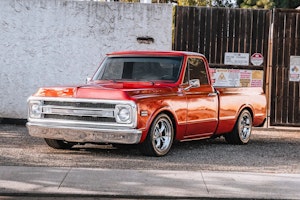


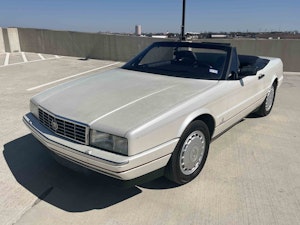


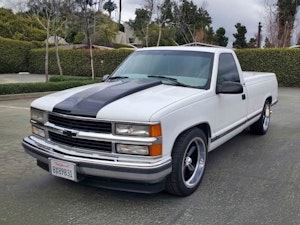













Packard 12, what a beautiful automobile.
Auto Union D-Type with two-stage supercharging. Talk about a shriek!
The majority are correct, if you see ANY V12 at a car show, absolutely be near it when it’s time for it to go home.
Your recording won’t do it justice.
Everytime I start the 4.8L DOHC V12 in my 1985 Ferrari 400i, I get a smile on my face that won’t go away until I’m in the garage!
Had Mercedes twin turbo V12 SL convertible. I think about 20 years ago. Quickest car I have ever driven with 700 horsepower and torque that would pin you into the seat.